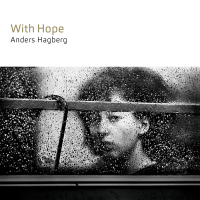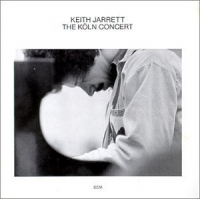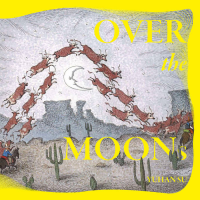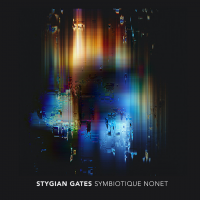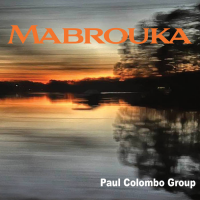Home » Jazz Articles » Multiple Reviews » Blue Note Series of Rare Summer Grooves
Blue Note Series of Rare Summer Grooves
The Rascals knew all about it. They expressed it perfectly in one of their biggest hit singles: Ain't nothing like groovin' on a Sunday afternoon. Not much serves the purpose of that groove better than the right music. To enjoy an exceptional groove, you often need some exceptionally groovin' music. Exceptional grooves—or, if you prefer, Rare Grooves.
Rare Grooves is the name of the Blue Note reissue series that recovers lost 1960s and '70s titles, polishes them to a glossy 24-bit remastered finish, and presents them to a new generation of potential listeners. Michael Cuscuna, co-founder and chief of the Mosaic Records reissue company, is producing this Rare Groove series for Blue Note. Cuscuna worked for Blue Note in the 1970s so he is familiar with the music and its new audience potential (His Mosaic Records partner, Charlie Lourie, was Cuscuna's hiring manager at Blue Note).
What qualifies a groovin' session as a Blue Note Rare Groove? "Titles that are issued in the Rare Grooves series are albums that have been heavily sampled in the Hip Hop world and which we find out are popular among club DJs," Cuscuna explains. "The jazz collector knows what he wants. But the Rare Groove series sticker helps younger buyers identify to the kind of jazz that they will like. Originally this series also came out in LP as well as CD, but we can't really issue them on vinyl anymore."
The most recent Rare Grooves installment features stylistically varied looks at '70s fusion and the art of the Hammond B-3. So return with AAJ to the days when bellbottoms were popular for the first time, and when "Funky Drummer" referred to a person and not a tape loop.
 Jimmy McGriff: The Worm (1968)
Jimmy McGriff: The Worm (1968) This McGriff date features his Hammond B-3 in the context of a large ensemble and is credited to "The Jimmy McGriff Organ and Blues Band." It's a small band in sheer numbers, with Blue Mitchell on trumpet and three saxophonists (Danny Turner on alto, Fats Theus, who composed the title track, on tenor, and Bob Ashton on baritone). But when the horns combine forces, as in their tart counterpoint to Neal Hefti's groovy "Girl Talk" or their ensemble riffing which busts up the sequence of solos in "Heavyweight," they sound like a much larger ensemble. In that respect, closing this set with Strayhorn's piece of classic Ellington, "Take the 'A' Train," provides a fitting coda.
Mitchell proves the most reliable second soloist, and takes the best solo in the set as he swings through McGriff's "Blue Juice" with icy liquid cool, though Turner's passionate turn in "Heavyweight" constructs a true sanctuary of Bird. Another McGriff tune, "Keep Loose" provides a vehicle for the leader's high-voltage song-length solo, electrified with full stops, rhythmic drops and soaring chops. And that wriggly "Worm" bumps and thumps with classic boogaloo / soul-jazz drum sounds and beats, the vibrant pulse that continues to beat strong among today's acid jazz and hip-hop sets.
 Brother Jack McDuff: Moon Rappin' (1969)
Brother Jack McDuff: Moon Rappin' (1969) Set near the end of the psychedelic '60s, this is definitely the most experimental of these three Hammond sets. There's no shortage of the electric soul typical of this "Brother," but these compositions sound more elastic and free than McDuff's usual fare. "Made in Sweden," for example, is essentially a seven-minute duet between the relatively unusual combination of organ and drum. The full quintet features Bill Phillips as primary supporting soloist on tenor sax and flute, drummer Joe Dukes, guitarist Jerry Byrd and ubiquitous bassist Richard Davis (thumping on electric instead of acoustic).
The band explores the opening "Flat Backin'" for more than ten minutes, unfolding it in sections like an erector set construction. Phillips' tenor in "Loose Foot," the tune closest to straight-up bop, swings with a gutbucket punch large enough to be a Texas tenor. Another expansive workout, "Oblighetto" is a (very) thinly-veiled exercise of Benny Golson's warhorse "Killer Joe," at least until McDuff gets a little weird, introducing new melody lines with eerie female vocals that emerge and then disappear like a haunting mist.
The real treat is the leader's relatively rare appearance on piano for one of his title track solos, which bursts with the sound of downhome Sunday morning gospel and continuously repeats a curved figure to create a swirling whirlpool of sparkling melody and rhythm.
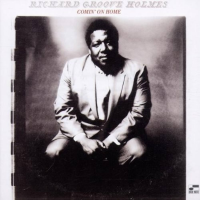 Richard "Groove" Holmes: Comin' On Home (1974)
Richard "Groove" Holmes: Comin' On Home (1974) Five years later, Groove churned out this straight-up set of Hammond B-3 funk. You sort of get the feel for the sound of this music from the setup of this band: Holmes plus Weldon Irvine, who previously worked with Nina Simone and Freddie Hubbard, on electric piano, drummer Daryl Washington, guitarist Gerald Hubbard, a conguero AND a percussionist, plus the monster of modern electric funk bass, Jerry Jemmott (replaced on one track by Chuck Rainey). Not a single horn or saxophone. Rhythm instruments all.
The purpose of this set—the groove, the whole groove, and nothing but the groove —is evident right from the cold kickin' it James Brown phonk bass line in the opening "Groovin' For Mr. G." Guitarist Hubbard slips on his best cool Grant Green blue shades, and Groove... well, grooves. This funk pulse also beats through "Down Home Funk," which slips and dips on the classic stop/start drum rhythm of Brown's "Cold Sweat" as Groove digs down and dirty through the meat to cut stone to the bone (yes, the requisite drum breakdown comes correct).
Groove and Irvine dust their respective keyboards with futuristic space-age sparklies in "Mr. Clean," sounding very much like fusion keyboardist Brian Auger, whose free-form ensemble the Oblivion Express was enjoying its heyday in 1974. And although you may groan to read this set includes covers of the "Theme from Love Story" and Jobim's soft jazz samba "Wave," they generally sound better in execution than in conception.
 Bobbi Humphrey: Satin Doll (1974)
Bobbi Humphrey: Satin Doll (1974) Produced as a valentine to Humphrey's newly born daughter to celebrate her birth, this fusion set is like a baby blanket pulled straight from the clothes dryer—warm and soft. Humphrey updates the Ellington classic with slick fusion tempos and plenty of room for her flute for her little "Satin Doll," includes a song penned by Larry Mizell for "My Little Girl," and ends the set with Stevie Wonder's "You Are the Sunshine of My Life" (A few years later, Humphrey would play flute on Wonder's historic Songs in the Key of Life album). Straight from Humphrey's heart as this set may be, it might also be subtitled "The Larry Mizell Show," as this veteran of dozens of late 70s fusion jazz sessions (some, such the Donald Byrd Blackbyrds sessions, more valuable than others) arranged and conducted the music, co-produced the album, and wrote half the songs. Listeners who remember the Blackbyrds' disco hit "Walkin' in Rhythm" have the perfect point of reference for Humphrey's sound, and the sound of the band, on this album, especially when the vocals gracefully engage Humphrey's flute in a romantic ballet through the "San Francisco Lights" or the leader forcefully strides out for "Ladies Day."
Humphrey surrounds herself of this album with state of the fusion musicians, including the liquid and familiar rhythm section of drummer Harvey Mason and bassist Chuck Rainey, Larry and Fonce Mizell on keyboards, Don Preston (previously of The Mothers of Invention) on synthesizer, and legendary soul guitarist Melvin "Wah Wah" Ragin.
 Eddie Henderson: Sunburst (1975)
Eddie Henderson: Sunburst (1975) Though Sunburst is only seven calendar years removed from The Worm, it is a musical lifetime away. This is often angry and desperate music, born from and for angry and desperate times. It gallops and broods and congeals and splinters, sometimes so powerfully that leader Henderson, on trumpet, flugelhorn and cornet, can seem swept along in its tide.
Bennie Maupin serves as Henderson's main frontline foil on various reeds, and his bass clarinet strongly impacts the sound and texture of the ensemble (it even briefly honks and stomps out the role of fuzz-bass in "Galaxy"). Henderson, like almost every trumpet player experimenting with legitimate jazz-rock fusion at the time, sounds refracted through the Miles prism—the squeals and trills through electronic effects, the roaring silences, the broad brushstrokes and swaths of vibrant tonal color. It is almost impossible to listen to portions of his incisive, sharp solos in "Hop Scotch" and "The Kumquat Kids" without thinking of Davis. Yet his sound, especially on cornet, almost never turns its back completely on populist mainstream players such as Clark Terry.
The way Maupin sets his saxello ablaze in the blistering opener, "Explodition," echoes Rahsaan Roland Kirk's firebrand work on this unique instrument. This track crackles in finish like a glass of ice-cold sparkling hard cider crisply slicing through the thick soporific air of sweltering summer humidity. Alphonso Johnson's electric bass teams with George Duke's clavinet piece to give "The Kumquat Kids" a funk swagger smack dab in line with Stevie Wonder's best 1970s inner visions.
"Involuntary Bliss," which softly and slowly opens like the petals of a blossoming flower, and the closing meditation "We End in a Dream," provide less frantic and much needed oases of calm.
Tags
Multiple Reviews
Chris M. Slawecki
Jimmy McGriff
Jack McDuff
Richard Groove Holmes
BOBBI HUMPHREY
Eddie Henderson
PREVIOUS / NEXT
Support All About Jazz
 All About Jazz has been a pillar of jazz since 1995, championing it as an art form and, more importantly, supporting the musicians who make it. Our enduring commitment has made "AAJ" one of the most culturally important websites of its kind, read by hundreds of thousands of fans, musicians and industry figures every month.
All About Jazz has been a pillar of jazz since 1995, championing it as an art form and, more importantly, supporting the musicians who make it. Our enduring commitment has made "AAJ" one of the most culturally important websites of its kind, read by hundreds of thousands of fans, musicians and industry figures every month.








